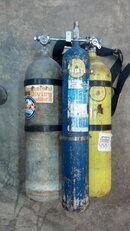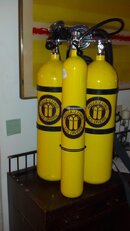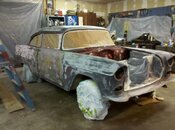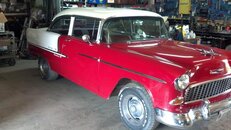Chez722 and others,
I watched Chez's photos, and see that his son has his nose under his shirt...presumably there were some vapors off-gassing. As an industrial hygienist, I have to say that some of these compounds can have pretty nasty solvents or acids that you really need to protect yourself against. If the label says it is a respiratory hazard, you need to see what the compound is, and get a
cartridge respirator that fits the hazard (for solvents, it is an organic vapor cartridge). The gloves need to protect against that specific hazard, and there are
glove selection charts to help with this decision. Don't assume that any plastic or vinyl glove will protect adequately from a particular solvent. The solvent/chemical should be on the label, but if not you need the MSDS (now, with Global Harmonization, they will be called Safety Data Sheets, or SDSs).
Chez did a great thing by doing all this outside; garages are not well ventilated, and can cause some problems with solvent exposure. With solvents, its always a good idea to have a fire extinguisher available too.
Usually, industrial operations are well designed to handle these hazards. Schools are sometimes designed well, and sometimes not, to control these hazards.
Sometimes you need to think a bit outside the box, and realize that some of the old paints also were lead-based. If you are removing them, especially by dry methods, test for lead. You don't want to breathe dusts containing lead, so a different type of respirotory protection is necessary a HEPA filter on the cartridge respirator (you cannot tell if you have a good seal with a "dust mask" although the N-95 toxic dush masks are pretty good). Don't use a paper mask with a single band--they are meant for "non-toxic" dusts, e.i. road dust (without silica).
SeaRat
John C. Ratliff, CSP, CIH, MSPH









